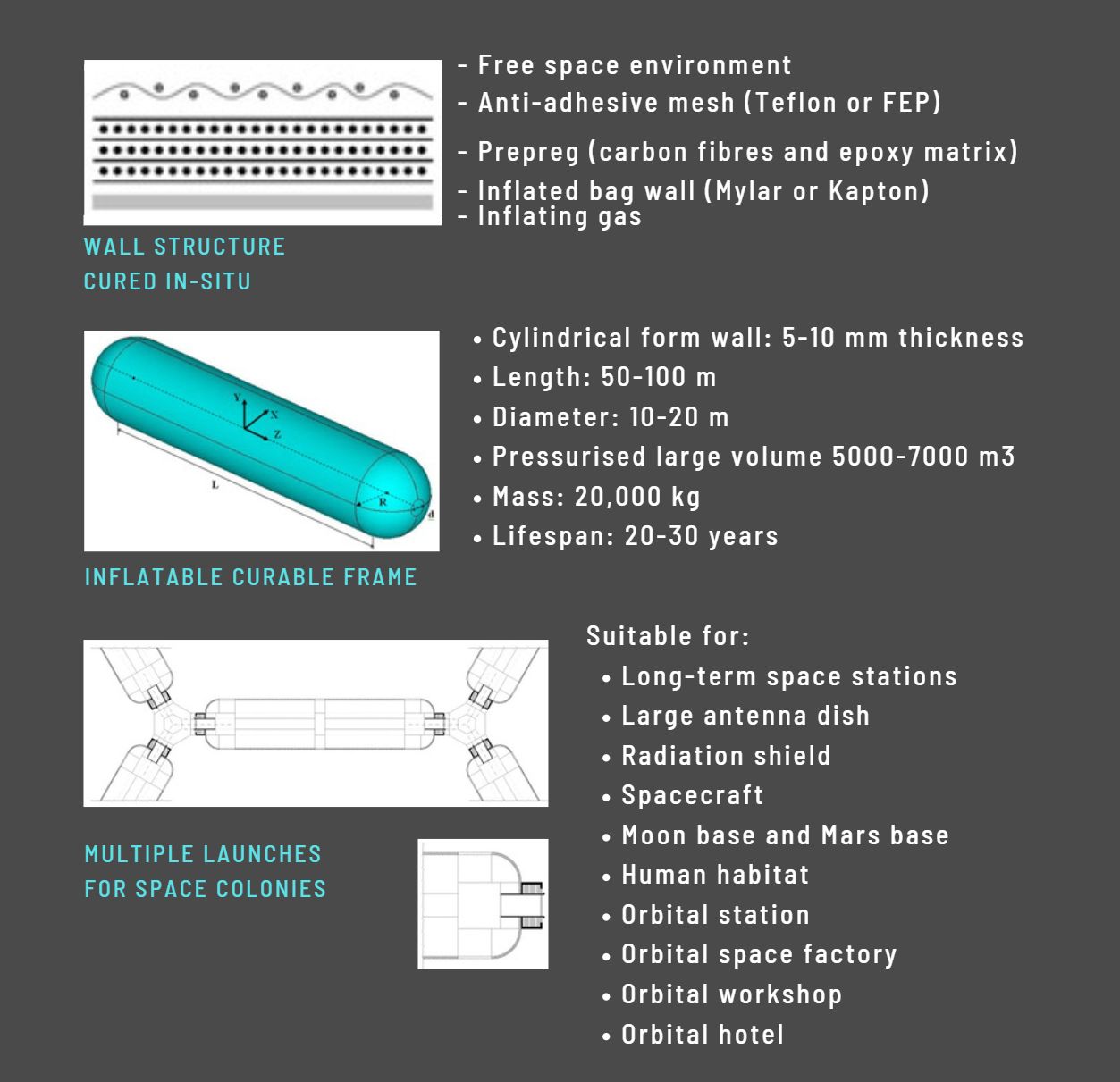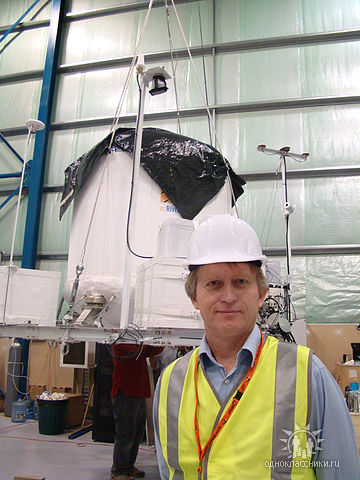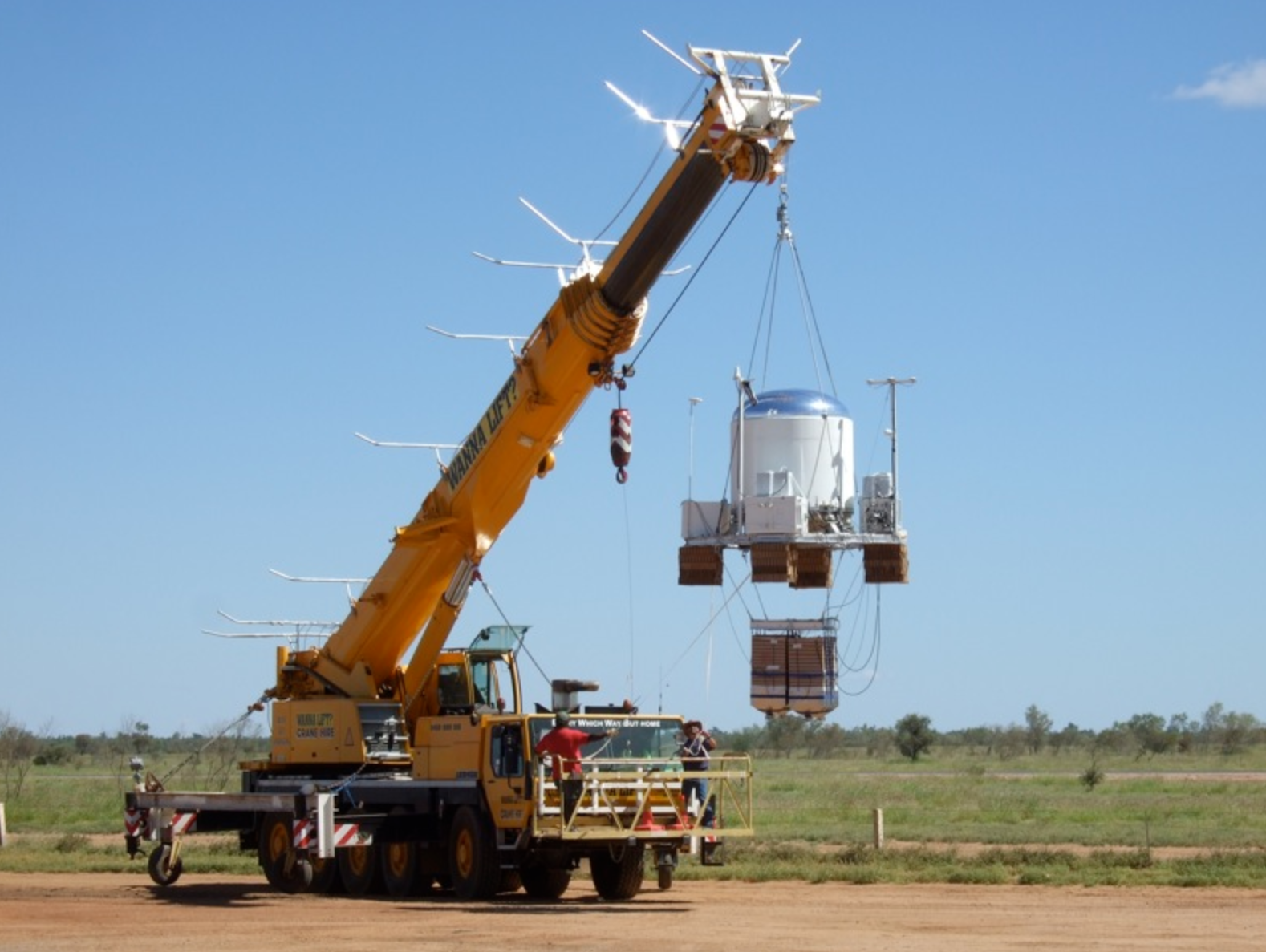Large Space Constructions
 Ewingar Scientific have successfully developed and trialled a unique curing technology to build large-size space constructions, with each module measuring 10 times the length of current International Space Station modules. This state-of-the-art curing process of the fibre-filled composites enable it to be cured directly in free space (Earth orbit, Moon, Mars).
Ewingar Scientific have successfully developed and trialled a unique curing technology to build large-size space constructions, with each module measuring 10 times the length of current International Space Station modules. This state-of-the-art curing process of the fibre-filled composites enable it to be cured directly in free space (Earth orbit, Moon, Mars).
Large size space stations (up to 7000 cubic meters, or 100m in length per module) can revolutionise how space and space stations are utilised. Some of the many applications for large scale space constructions include Moon base, Mars base, mining station, telecommunication station, space observatory, interplanetary spacecraft, space factory, antenna dish, radiation shield, and solar sail.
How it works
Ewingar Scientific’s large space constructions are made using state-of-the-art composite materials technology in which liquid resin is applied directly in free space (in space orbit). The fabric frame is impregnated with a liquid matrix (prepreg) prior to the structure being launched into space. The structure is assembled with membrane, folded and packed in a container. On arrival at its space destination, the frame and antenna are inflated and cured in-situ.
Advantages of Ewingar Scientific’s large inflatable space constructions
- Cured in-situ in space (substantially increasing volume potential)
- Pressurised large volume
- State-of-the-art composite technology
- Applicable for Earth, Mars and Moon orbits
- Inexpensive and robust
- Single launch
- No crew activity required
Read more about the applications, functions and benefits of large, inflatable space constructions
Abstract
The next step of space exploitation requires large construction in orbit. We need a sufficiently large volume of pressurized construction protecting the crew, passengers, space processing equipment, etc. However, the modern and planned space constructions – which are in a “ready-to-use” state, prepared on the ground and are launched by launch vehicles – are only the size of “one-car garages”. It limits our future in space and makes the space industry impossible. We have to be unlimited with space, in space.…Read more
Technology Trial – Composite materials with uncured epoxy matrix exposed in stratosphere during NASA stratospheric balloon flight


Dr Kondyurin at the launch of the TIGRE gondola by NASA at Alice Springs, 2010. The payload carried a cassette of Dr Kondyurin’s uncured composite materials with epoxy resin matrixes that were exposed in the stratosphere over the three days of the flight. (Image: NASA)
A cassette of uncured composite materials with an epoxy resin matrix was exposed in the stratosphere (40 km altitude) over 3 days. Temperature variations of -76…+32.50C and pressure up to 2.1 Torr were recorded during flight. An analysis of the chemical structure of the composites showed, that the polymer matrix exposed in the stratosphere becomes crosslinked, while the ground control materials react by way of polycondensation reaction of epoxy groups. The space irradiations are considered to be responsible for crosslinking of the uncured polymers exposed in the stratosphere. The composites were cured on Earth after landing. Analysis of the cured composites showed that the polymer matrix remains active under stratospheric conditions. The results can be used for predicting curing processes of polymer composite in a free space environment during an orbital space flight.
You can read more about our space research activities here:
- Dr Kondyurin’s 2010 polymer space trial: http://stratocat.com.ar/fichas-e/2010/ASP-20100416.htm
- Report on this trial by NASA https://ntrs.nasa.gov/archive/nasa/casi.ntrs.nasa.gov/20130013590.pdf.
- Industry magazine articles on our technology and flight: https://www.materialstoday.com/composite-applications/news/gurits-se-70-prepreg-cured-in-the-stratosphere/ | https://www.compositesworld.com/news/gurit-nasa-evaluate-polymer-cured-in-stratosphere
Launch of the TIGRE gondola from NASA, Alice Springs in 2010. Footage courtesty of ABC News Australia.